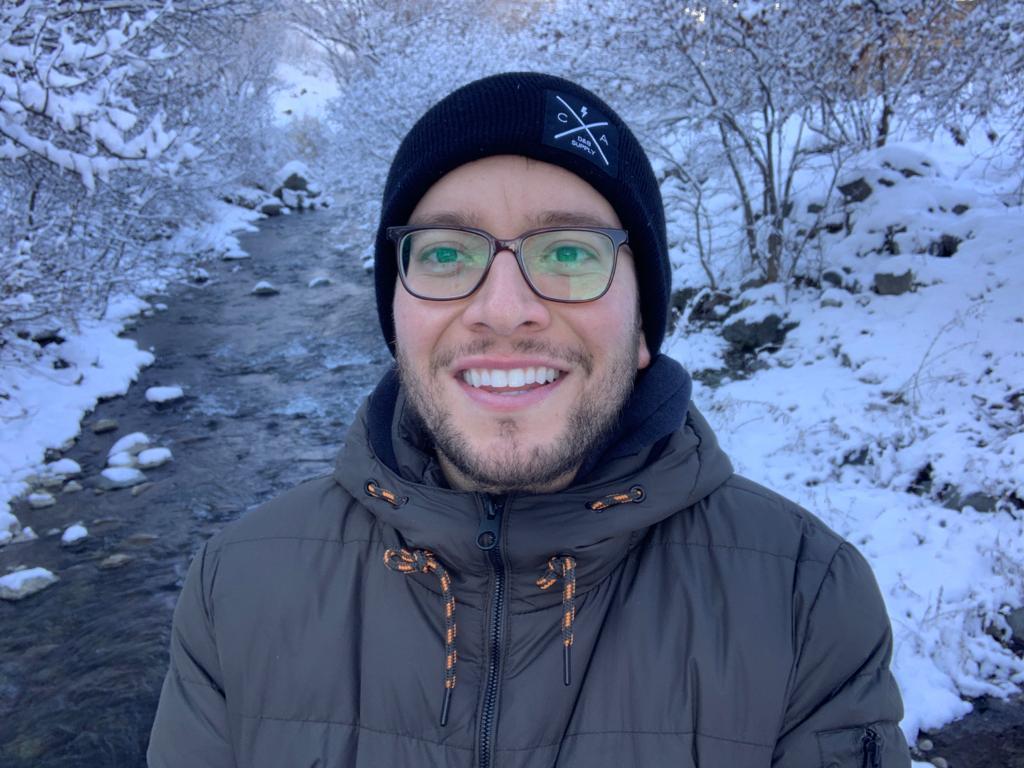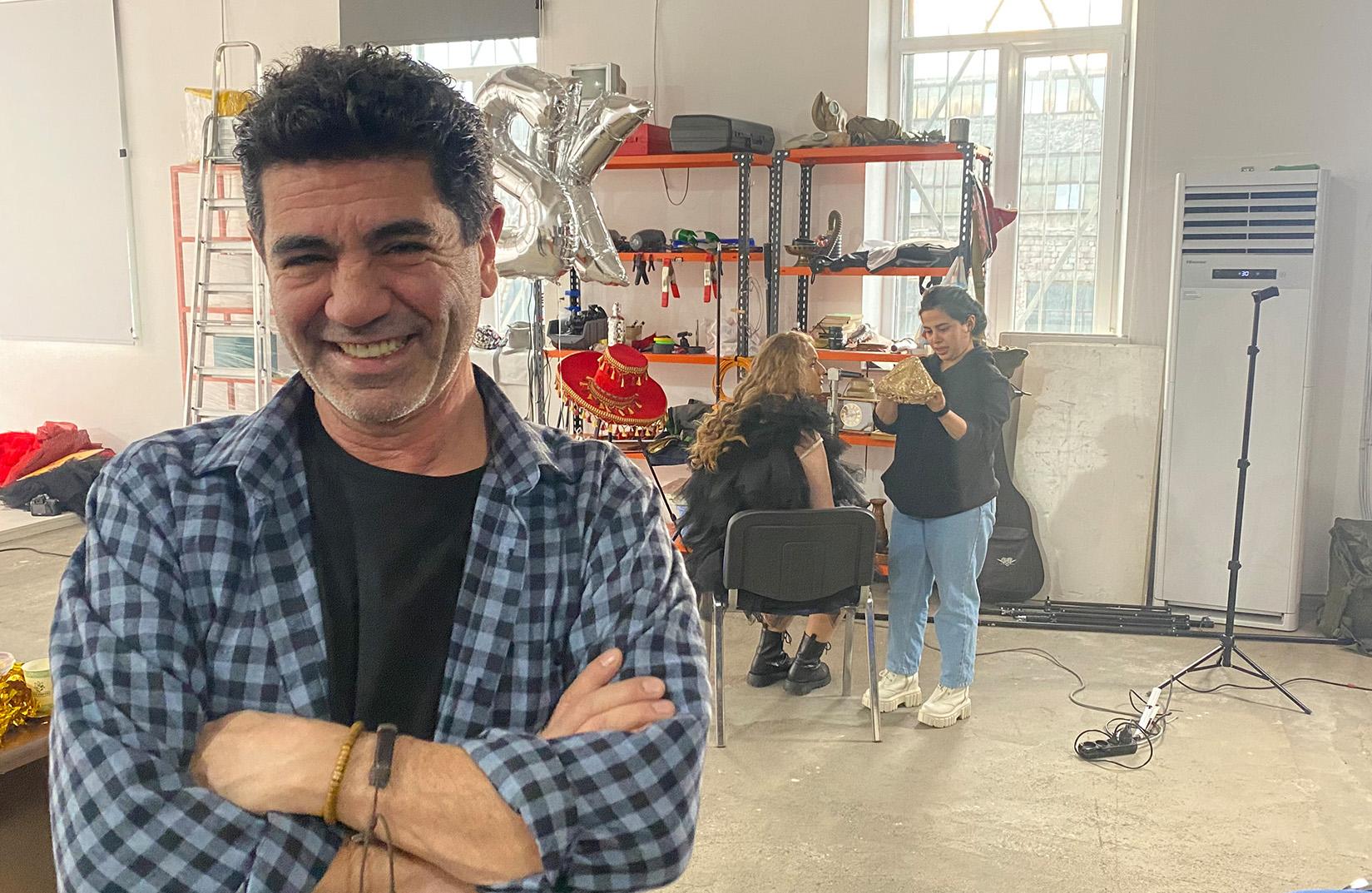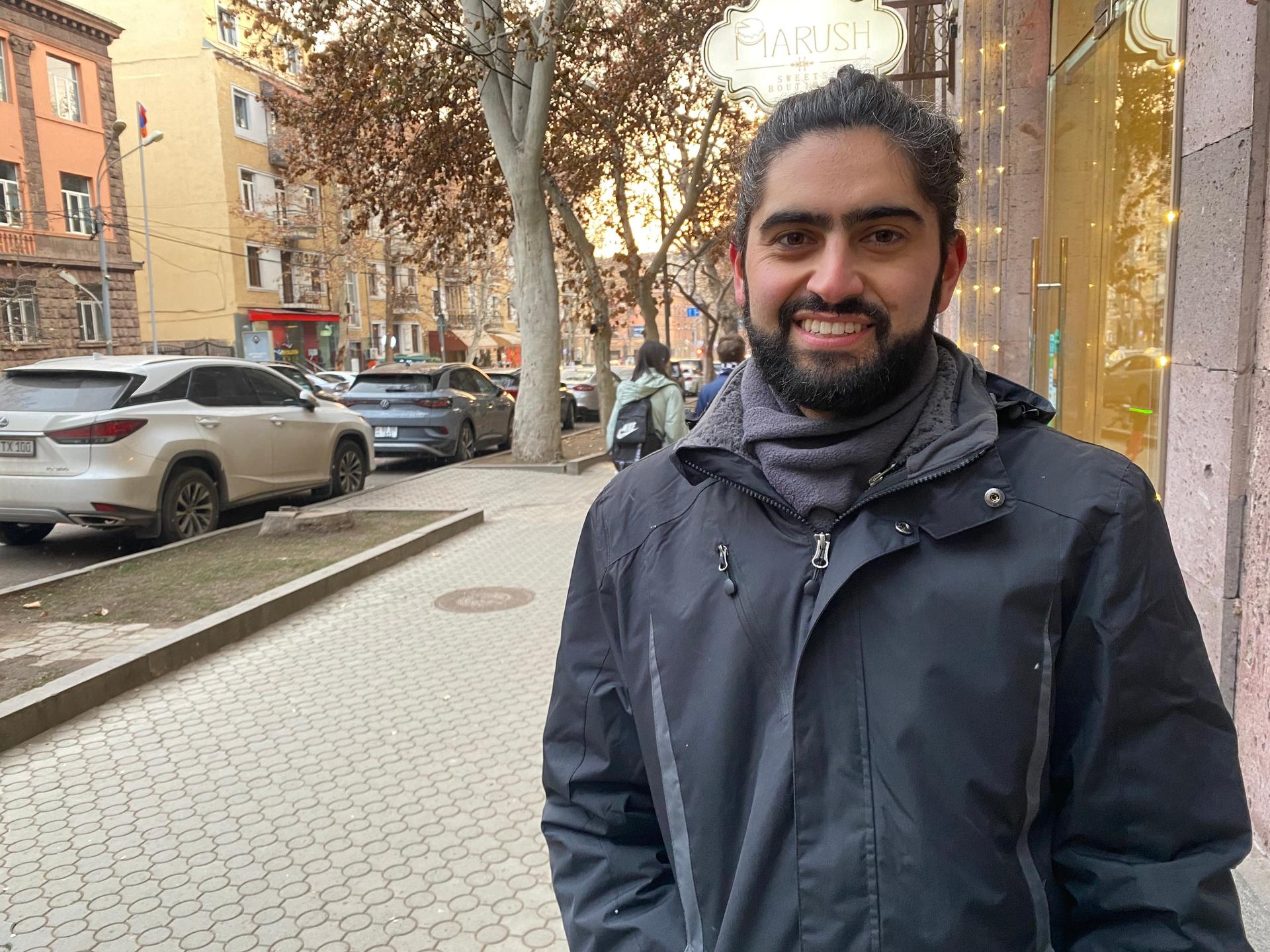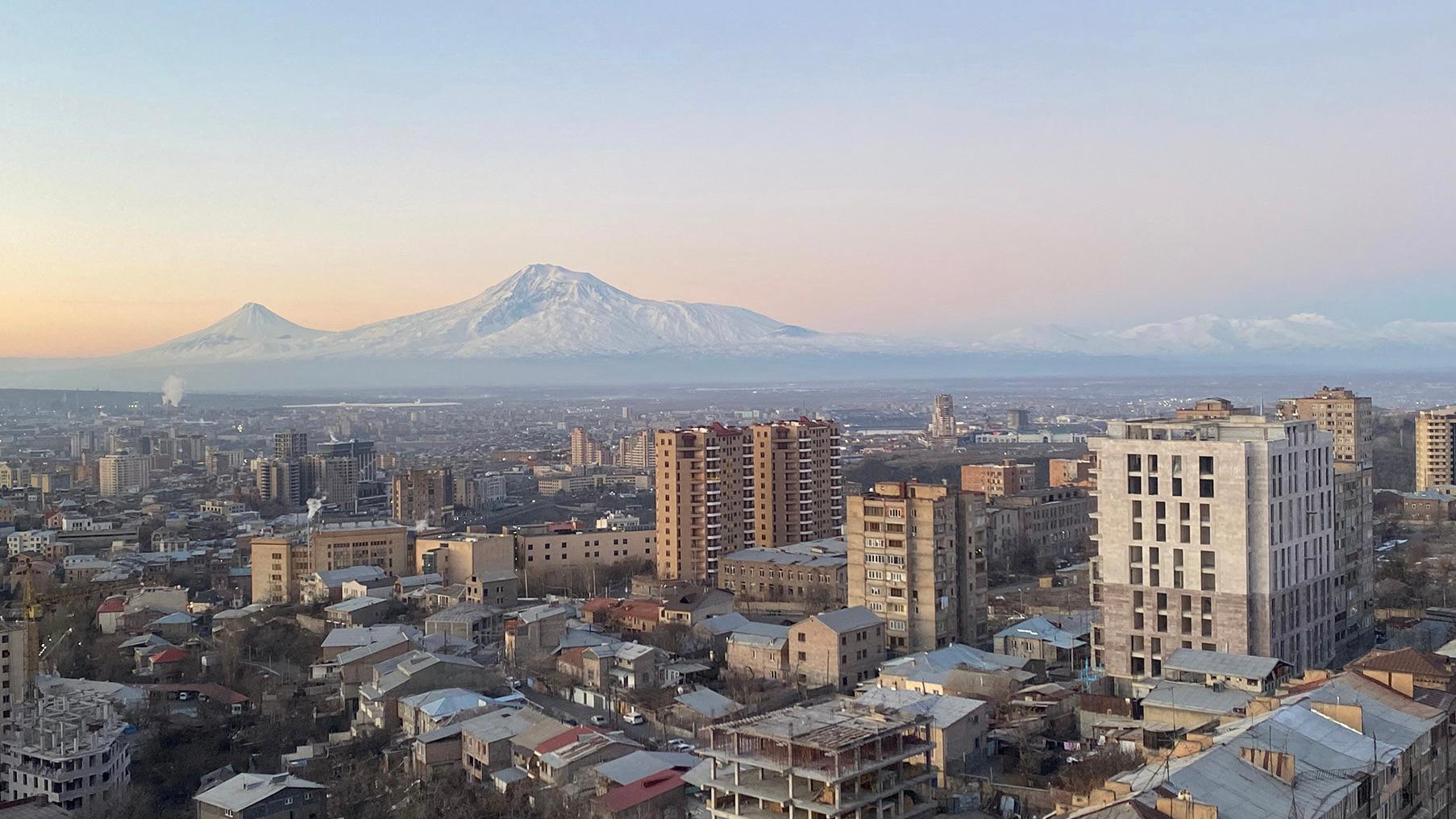An earlier version of this story originally appeared on KQED. Read the original article here.
In the fall of 2020, during the depths of the COVID-19 pandemic, Hovik Manucharyan got on a plane and flew from the United States to a country at war.
Throughout that fall, Manucharyan’s home country, Armenia, was in the middle of a 44-day war with neighboring Azerbaijan over the disputed territory of Nagorno-Karabakh, which is referred to by Armenians as Artsakh. When the conflict ended, entire towns in the region — which is populated by ethnic Armenians — fell to Azerbaijan.
Thousands of Armenians were displaced as a result. Armenian immigrants in California, like Manucharyan, who moved to Los Angeles when he was a teenager, rallied to send aid to Armenia during the war.
But Manucharyan felt that being so far away limited his ability to support his home country. So, he flew to Armenia during the war to help out as a civilian. He brought much-needed supplies and energy at a time when many Americans were not even aware of the conflict.
When Manucharyan returned home, he and his wife Suzanna, who was also born in Armenia and immigrated to LA, decided to move back to Armenia with their three kids.
“It just sort of feels less stressful being here [in Armenia] than far away and hearing about your homeland and not being able to contribute,” Manucharyan said.
Since moving to Armenia, Manucharyan has tried to use his experience to connect with the Armenian diaspora and inform them about what’s happening on the ground there. He even started a podcast aimed at Armenians living across the globe that focuses heavily on the situation in Nagorno-Karabakh.
The Manucharyans are part of a growing trend of Californians moving to Armenia full time to launch new projects in a country that some of their relatives left several generations ago. For many, the 2020 war provided the impetus to leave California behind. They’re now using skills they gained in the United States to make a difference in a country that many know more from stories than from experience.
Californian transplants have started businesses and nonprofits. Some work in Armenia’s government. Others have helped expand Armenia’s tech sector and worked to develop its infrastructure. In this small country that has few close allies and is still engaged in an ongoing conflict with Azerbaijan, this reverse migration is making an impact.
“I just felt like I wasn’t doing enough in LA, knowing that people my age or younger were being displaced or killed by the war here,” said Mikael Matossian, a 28-year-old from the San Fernando Valley who relocated to the capital Yerevan last year.

Little Armenia
There are more Armenians living outside Armenia than in it, with large parts of the diaspora concentrated in places like LA and Moscow. Starting in 1915, hundreds of thousands of people fled the Armenian genocide, committed by the Ottoman empire — what is modern-day Turkey — and wound up all over the world. Another large wave of immigration from Armenia started in the ’90s after the Soviet Union collapsed and Armenia became an independent country.
LA County in California has the largest population of Armenians in the world outside Armenia, with the city of Glendale — sometimes called Little Armenia — considered the epicenter of Armenian language and culture in California. Armenian is widely spoken in LA, with Armenian restaurants and schools scattered around the city. For many, the Armenian diaspora in California provides a grounding community. But for others, the diaspora can sometimes feel suffocating.
“I wanted to get out [of the community] because I really needed space to be myself,” said Kyle Khandikian, who grew up in LA and went to an Armenian school in Encino.
Khandikian, who identifies as gay, said that when he was growing up, LGBTQ issues were a taboo subject in LA’s Armenian community.
“As a kid, I didn’t feel like I could be out and I wasn’t out,” Khandikian said.
When he started college at UCLA, Khandikian tried stepping away from the Armenian community. But being Armenian continued to be an important part of his identity.
“I think that if you asked one of my friends from UCLA, ‘Who is Kyle?’, one of the first things they will say is, ‘Kyle is Armenian,’” Khandikian said.
Once Khandikian got some distance from the Armenian community during college and became comfortable with his sexuality, he felt like his different identities — Armenian and queer — could coexist. That made him want to wholeheartedly embrace his Armenian side in a way he felt like he couldn’t before.
So, he moved to Yerevan to immerse himself in Armenian culture.
“Maybe one of the reasons why I wanted to come here is to let go of some of the baggage that I was given just by way of being born into this place and this people,” Khandikian said.

A reverse brain drain
Arthur Aghadjanians never planned to move from LA to Armenia. He got stuck there while visiting the country in 2020 due to pandemic restrictions.
Aghadjanians spent that time in Yerevan holed up writing songs on the guitar and discovering local Armenian music. “I had no idea we have so much talent here,” he said.
He decided that he wanted to connect the Armenian diaspora — which he says is linked closely through political issues and common history — through something more fun like music.
So, he now spends most of the year in Armenia, where he operates an online platform called Carpet Jam, which curates videos of Armenian musicians. He has a packed schedule networking and helping musicians produce music videos for the site.
Aghadjanians had never made a music video before he moved to Yerevan. He used to work in construction back in LA, but he always played music on the side.
“Just being around a place like Hollywood, you’ve seen how it’s done right, so you come here and try to follow the same suit,” Aghadjanians said.
Aghadjanians’ startup and the skills he brings with it from the years he spent in California are an example of a sort of reverse brain drain happening in Armenia. Instead of educated, skilled workers moving away from their home countries for opportunities in the US, Armenian Americans are bringing their skills back to Armenia.
Mikael Matossian from the San Fernando Valley used to work in the renewable energy industry in LA. Now he helps Armenia make its energy system less dependent on Russian gas.
“I think there’s a really important role for diasporans to play here to support the ongoing development of the country,” he said.

A sense of community
Even though Matossian had never lived in Armenia full time before moving to Yerevan last year, he said the country immediately felt like home. Just hearing people talking in Armenian everywhere, the language he spoke with his parents and grandparents back in LA, gave everything a sense of familiarity.
But moving to Armenia isn’t a seamless transition for many who grew up as part of the diaspora. Matossian — and many other Californians — use a dialect called Western Armenian commonly spoken by the descendents of those who fled parts of the country that were annexed to Turkey during the genocide a century ago.
Many Californians who move here have to master the local dialect, Eastern Armenian, spoken in the capital. Matossian said he initially felt self-conscious when he spoke after arriving in Yerevan.
“I wanted to fit in here, but I’ve since kind of abandoned that idea — I’m comfortable with my dialect,” he explained.

Older Californians like Hovik Manucharyan say they want their children to grow up with a closer connection to Armenian language and culture.
The move was a big change for Manucharyan’s three kids, but they felt welcomed when they arrived at their new Armenian school. Manucharyan’s 17-year-old daughter, Vardine, said American students don’t really care when a new kid shows up in class. But in Armenia, students crowded around her on her first day at school, introducing themselves and offering to show her around.
“Schools [in Armenia] are more like family,” she said.
Californians living in Yerevan described feeling closer to their ancestral homeland after moving there. Their families survived a genocide that tried to extinguish Armenian culture.
But the survivors carried it with them when they fled, as if their traditions and language were burning embers that they later rekindled, in places like California, into big roaring bonfires.
Moving nearly halfway around the world makes the Armenian experience more palpable — something they can touch without getting burnt and carry with them wherever they go.
Our coverage reaches millions each week, but only a small fraction of listeners contribute to sustain our program. We still need 224 more people to donate $100 or $10/monthly to unlock our $67,000 match. Will you help us get there today?
